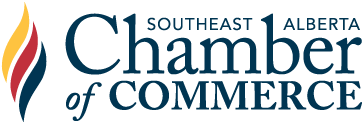Small Scale Renewable Energy (Co-Sponsor)

Small Scale Renewable Energy (Co-Sponsor)
Energy & Environment - Provincial Policy
Sponsor: Lethbridge
Co-Sponsor: Medicine Hat
Issue
Literature has long suggested that Alberta has the natural assets and technical feasibility to support further renewable energy development. Alberta’s renewable energy generation is low compared to the other provinces. Alberta's largest source of renewable energy is wind power, generated from turbines often built together at wind farms on rural land, producing roughly 20% of total electricity in the province.
Background
Despite the importance and potential of renewable energy as part of a low carbon future,Alberta generated 30% of its electricity in 2022 from renewable sources. This compares to British Columbia at 90%1, Ontario at 92%2, and Quebec at 99%3.
The Government of Canada has set the goal of achieving a net-zero power grid by 20504 and has been enacting legislation aggressively to see that goal through.
In addition to Government of Canada Net-Zero regulation, on January 14 and 15, 2024, Alberta
Electric System Operator issued provincewide gride failure warnings due to increased demand caused by extreme cold. These warnings requested that residents and businesses limit their consumption and were not only disruptive, but they were also potentially economically costly due to possible lost productivity because of interruption to business operations.
Record low temperature brought record high demand for electricity. And renewable energy sources could not keep up. There was no wind on the weekend and the sun set before peak demand. To make matters worse, four natural gas-powered plants failed. Prior to the shortages, there was strong wind generation, backed by steady supply from natural gas-powered plants5.
Alberta’s electricity market is deregulated, allowing private generators to participate in a competitive power pool. Subject to the approval of the Alberta Utilities Commission (AUC), any generator can connect to the grid, where the transmission network allows buyers to purchase the energy with Power Purchase Agreements. Independent Power Producers make competitive offers to sell their energy to the grid and receive a price at the intersection of electricity supply and demand on an hourly basis. Smaller energy producers (under 5 MW) can develop projects under the Micro-Generation Regulation, allowing energy generation from renewable or alternative sources to offset the generator’s use, as well as sell back excess power to the grid.
Business can assist the Governments of Alberta and Canada in reaching net-zero targets, reduce operating costs, and decrease their load on the grid by becoming small-scale renewable generators.
In October 2017, Flexahopper Plastics in Lethbridge brought online an array of 508 large solar panels which generate 212Mwh per year.
Solar panels remain a major capital investment, the cost of which or long-term credit burden may deter businesses.
The Government of Canada currently allows businesses to deduct up to 100% of total solar asset costs in the first year of purchase under the Capital Cost Allowance (CCA), section 43.2 of the Income Tax Regulation6. Alberta currently has no such incentive to business, leaving the opportunity on the table to stabilize our power grid by incentivizing industry to become producers rather than consumers.
By decreasing the cost barrier to business, the Government of Alberta can solve a number of problems at once – grid stability, meeting Government of Canada Net-Zero commitments, and catching up to the rest of Canada when it comes to renewable energy production.
It only makes sense to hedge our public bets by making it as easy as possible for businesses of all sizes to enter into the small-scale renewable energy market. Leveraging tax incentives to reduce barriers for renewable energy will help Alberta tap into the potential of its vast renewable energy resources, which will mean more jobs, more investment coming to the province and affordable electricity.
Recommendations
The Southeast Alberta Chamber of Commerce, along with the Alberta Chambers of Commerce, recommends the Government of Alberta:
- Set clear targets and make commensurate investments in energy storage projects to ensure Alberta can leverage its opportunities in renewable energy;
- Develop outreach programs to attract students to relevant academic programs – with the aim of producing a diverse, highly skilled work force of post-secondary graduates and/or tradespersons;
- Create a tax incentive to business to reduce capital cost barriers of installing renewable energy technologies; and
- Engage in a united action with other levels of government, electricity employers, and academic institutions to support education and training or retraining to optimize the labour potential of current workers.
Resources
1. https://www.cer-rec.gc.ca/en/data-analysis/energy-markets/provincial-territorial-energy-profiles/provincialterritorial-energy-profiles-british-columbia.html
2. https://www.cer-rec.gc.ca/en/data-analysis/energy-markets/provincial-territorial-energy-profiles/provincialterritorial-energy-profiles-ontario.html
3. https://www.cer-rec.gc.ca/en/data-analysis/energy-markets/provincial-territorial-energy-profiles/provincialterritorial-energy-profiles-quebec.html
4. https://laws-lois.justice.gc.ca/eng/acts/c-19.3/fulltext.html
5. Alberta’s electrical grid is overloaded. Here’s what to know. https://ppforum.ca/policy-speaking/whats-wrongwith-albertas-overloaded-electrical-grid/
6. https://laws-lois.justice.gc.ca/eng/regulations/c.r.c.,_c._945/fulltext.html
Date Approved: May 2018
Date Renewed: May 2021
Date Renewed: May 2024
